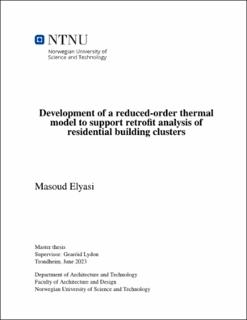| dc.description.abstract | This study aims to introduce a method for retrofitting old buildings with different situations and
help with retrofit decision-making and reduce the overall (embodied and operational) emissions
during the life span of a building. For the model, several housings in a district are prepared with
different options for retrofitting. Three types of housings (detached, semi-detached, and terrace)
with four different dates of construction (4 different decades from 1960 to 2000) are considered.
Changing windows, adding insulations, changing the source of heating, and adding solar panels
as a source of energy are the strategies for retrofitting. The purpose of setting this model is to have
a user programming interface to use by any non-expert person in companies and municipalities
to help with fast and accurate retrofit decision-making. Moreover, the big-scale analysis can
help the municipalities establish laws to push the cities to decrease the emission of the building
sector. The main target of this study is the Norway context. For a more comprehensive insight,
it will be a comparison between Norway and other locations with different grid emission to see
if the strategies for retrofitting Norway suits other locations in Europe. As global warming is a
big issue in the construction industry’s future, future weather data is considered in the analysis
to see the impact of retrofit decision-making in future scenarios. | |
